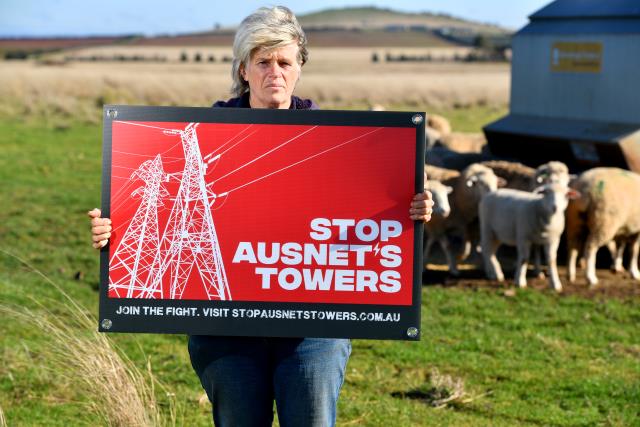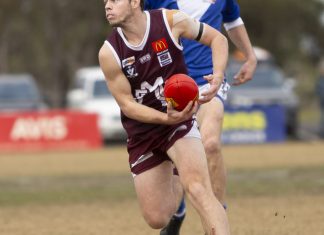
AAP and Liam McNally
A move to pay landowners $200,000 per square kilometre for energy infrastructure imposed on their properties has been labelled a slap in the face.
Residents living in the path of several projects in regional Victoria have previously protested high-voltage power lines and towers more than 80 metres high and are calling for infrastructure to be placed underground instead.
The projects are part of a wider move to shift the state to renewable energy as remaining coal-fired power stations are set to close over the next 12 years.
The first residents to receive payments will be those impacted by VNI West, likely connecting Ballarat in central Victoria with Kerang in the north and across to NSW, and the Western Renewables Link corridor running from Sydenham to near Stawell in Western Victoria.
The standard payments will be $8000 a year for 25 years for those with transmission easements on their land.
Moorabool Central Highlands Power Alliance chair Emily Muir called the payments a “sweetener“ and claimed they didn’t go far enough to compensate farmers.
About one kilometre of the farm she lives on with her husband is likely to be impacted by the Western Renewables Link.
Ms Muir said she wasn’t against renewable energy projects but believed power lines and towers on her property would impact farming by restricting weed spraying from a helicopter, stop the movement of certain machinery or stock and interrupt views.
“I feel like it’s the government trying to get us over the line to agree to a project that we’ve been protesting against for two-and-a-half years,“ she said.
In 2022 protests against VNI West stepped up, with hundreds of farmers driving tractors through Ballarat and another rally held outside Parliament House in Melbourne.
Plumpton farmer Barb Ford said the proposed lines, along with five towers, cut diagonally through the centre of her property.
“Money won’t make us happy about it,” she said.
“It just seems to be a dinosaur project – renewable energy is something for the future but we all believe these huge overhead transmission lines are something that should be in the past, and we know that there is technology available for underground projects.
Ms Ford said the project will have a “huge impact going across the north of Melton“, affecting the airfield, pony club, and MacPherson Park.
“It’s the scale of it, 80 metre high towers… the top of the towers 20 metres higher than the top of Mt Kororoit.”
The projects are part of a move to guarantee energy stability across the east coast, with power generated in Victoria and NSW able to be transferred between states.
“These new payments acknowledge the hugely important role landholders play in hosting critical energy infrastructure – a key part of Victoria’s renewables revolution,“ Victoria’s Energy and Resources Minister Lily D’Ambrosio said.
“We want to get the process for planning and approving new infrastructure right, so we can make sure the renewables revolution is a shared, equitable legacy for all Victorians.“
The Australian Energy Market Operator earlier this week warned the reliability of the grid would be in doubt over the next decade without urgent investments to replace coal plants.






